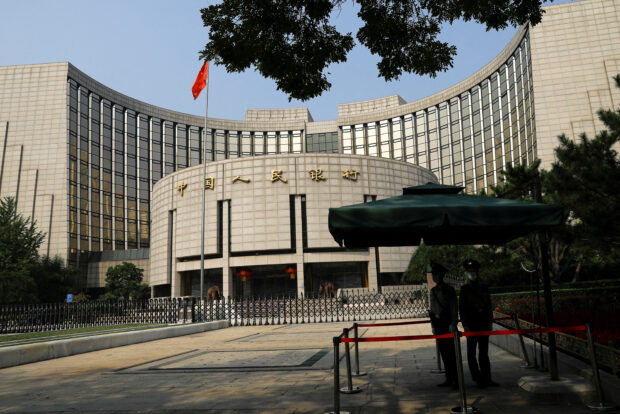China to cut banks’ reserve requirements to boost economy

Paramilitary police officers stand guard in front of the headquarters of the People’s Bank of China, the central bank (PBOC), in Beijing, China Sept 30, 2022. REUTERS/Tingshu Wang/File photo
BEIJING – China‘s central bank will cut the amount of cash that banks must hold as reserves from Feb. 5, Governor Pan Gongsheng said on Wednesday, the first such cut for the year as policymakers extend efforts to shore up a fragile economic recovery.
Pan said the People’s Bank of China (PBOC) would cut the reserve requirement ratio (RRR) for all banks by 50 basis points (bps).
The move will free up 1 trillion yuan ($139.45 billion) to the market, the central bank chief said at a press conference in Beijing.
READ: China has more space to cut reserve ratio instead of interest rates
The PBOC will also cut re-lending and re-discount interest rates by 25 basis points for the rural sector and small firms from Jan 25.
Article continues after this advertisementThe reduction follows earlier cuts of 25 bps for all banks in September and March last year.
Article continues after this advertisementNeed for stimulus
The world’s second-largest economy has struggled to mount a strong post-COVID recovery as distress in the housing market, local government debt risks and weakening global demand slowed momentum.
A slew of policy measures have proven only modestly beneficial, raising pressure on authorities to roll out more stimulus.
In December, top Chinese leaders at a key meeting to chart the economic course for 2024 pledged to take more steps to support the recovery.
READ: Xi says China to consolidate and enhance economic recovery in 2024
Analysts say more stimulus is needed this year as the government aims to spur growth to fend off deflationary risks and keep a lid on unemployment as businesses remained wary of adding workers.
But the central bank faces a dilemma as more credit is flowing to productive forces than into consumption, which could add to deflationary pressures and reduce the effectiveness of its monetary policy tools, analysts say.
The economy grew 5.2 percent in 2023, meeting the official target, but the recovery has been more shakier than investors had expected.
Analysts polled by Reuters expected economic growth to slow to 4.6 percent this year.
($1 = 7.1712 Chinese yuan renminbi)